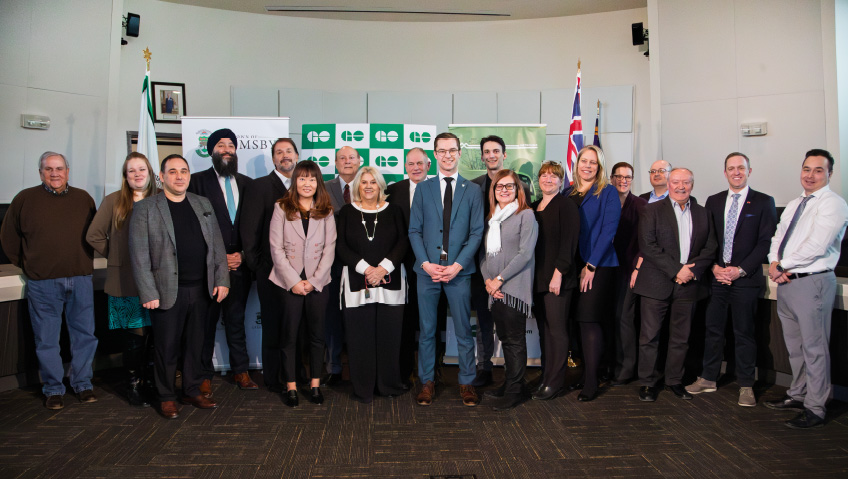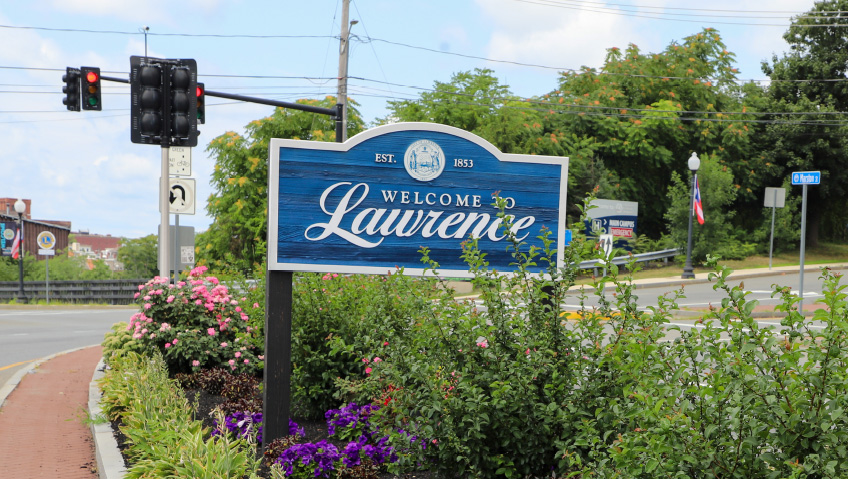Nestled among canyons, rivers, and forests, Craig, Colorado, is a nature lover’s dream. “We have so many natural amenities to offer,” says Economic Development Manager Shannon Scott.
In addition to the outdoor opportunities for which Colorado is famous, Craig boasts a welcoming, friendly atmosphere. “It’s a small-town community, a small-town feel,” Scott says. This small-town lifestyle comes with a lower cost of living, without losing out on big city amenities. Craig has a major medical facility, broadband access, a community college, and a strong school district, and businesses relocating to Craig will find plenty of incentives as well as an experienced workforce ready to transition out of the coal industry. “These are hardworking [people] and they’re highly skilled and trained,” says Scott.
Local leaders are committed to staying ahead of changing times, keeping residents employed and the economy thriving, and looking to the Moffat County Vision 2025 Transition Plan to guide the community forward. “As a priority we immediately began to investigate ways to bridge the tax and revenue gap once our major primary employers started to shutter, by asking questions like, ‘how do we go about economically diversifying to the point where we could replace the economic benefits of the largest coal generation plant in the state of Colorado and two significant local coal mining sites?’” City Manager Peter Brixius explains.
As a result, the Transition Plan was created out of partnerships between local leaders in Craig and Moffat County, the El Pomar Northwest Regional Council, and the Keystone Policy Center. “The intent of the Plan is to provide actionable recommendations and guidance for the development of a community-driven, coordinated process to direct the region’s economic transition from a coal-centered economy and realize our vision for 2025 and beyond,” Scott details. The Plan identifies four key focus areas within the region to prioritize: tourism, new and existing industry, infrastructure and planning, and workforce.
When it comes to tourism, “natural and recreational assets were immediately prioritized as we strategized on how best to include community and regional organizations and visionaries as part of the effort to build up our presence among outdoor enthusiasts,” states Brixius. “The Community’s ability to attract and retain visitor and tourism dollars was looked at critically.”
Indeed, visitors to the area enjoy wide-open spaces and unique outdoor destinations including The Dinosaur National Monument, Elkhead Reservoir State Park, the Yampa River, and Sand Wash Basin. Tourists can also enjoy a stroll through Craig’s quaint downtown and can learn more about the area’s rich history at the Museum of Northwest Colorado. In addition, the community hosts a number of local, signature annual events including Whittle the Wood, The Moffat County Hot Air Balloon Festival, Grand Old West Days, and the Moffat County Fair. These events are promoted with assistance from the Moffat County Local Marketing District (MCLMD). The MCLMD funds these legacy events as well as new events started by grassroots efforts of local community members.
Chris Jones, Chair of the Economic Development Advisory Committee (EDAC) and MCLMD board member, explains that the MCLMD plays a vital role not only in the promotion of tourism, but also in the transition of Moffat County’s economy. He expounds, “The MCLMD realizes the future of Moffat County is a balance of quality of life and economic diversification and expansion. MCLMD not only funds these events, we also fund feasibility studies for new business opportunities. The MCLMD uses its capital to help start-up business launch their ideas and we fund existing businesses to expand their operations. The MCLMD has intentionally created a large capital reserve to fund future major economic initiatives in Moffat County.”
Local industry, of course, is a major focus of the Moffat County Vision 2025 Transition Plan. “One of the most important aspects of Economic Development is the continued support of existing industries within our community by leveraging our resources and assets,” Scott says. She explains that, “We have recently formed two Urban Renewal Authority areas that will help encourage revitalization and redevelopment in blighted areas throughout the City and County through the use of Tax Increment Financing as an incentive to developers.”
In addition, over the past four years, the Small Business Grant Program has awarded over $450,000 in site improvement and economic development funding to local businesses, resulting in a total of $1.2 million worth of investments. The team has already completed ten Phase I and two Phase II environmental assessments through a recently awarded Brownfields grant, which will help assess and decontaminate abandoned industrial and commercial properties, making them more attractive for future development.
“In order to ensure that we create a diversified economy for future generations, it is also important that we attract new industry to the area,” Scott emphasizes. “We will focus heavily on marketing efforts that promote Craig and Moffat County as a great place to do business, with a variety of incentives and funding opportunities available through our two Urban Renewal Authority areas, an Opportunity Zone and Enterprise Zone,” she says. “We have a highly skilled and trained workforce that will be transitioning from the energy industry that can easily be re-trained to work in the manufacturing, industrial, construction trades, and transportation industries.”
This workforce also creates a great opportunity for potential entrepreneurs. As Jones explains, “These workers have spent many years creating new ways to efficiently maximize the production of natural resources while minimizing the environmental impact. This ingenuity is a great source for new business ideas. We are creating the infrastructure to maximize this potential.”
Infrastructure, of course, is vitally important to growing economies, and the Plan takes this into account. “As we continue to anticipate growth in our community over the next several years, it is important that our infrastructure and critical services can keep up with the demand,” says Scott. “We will continue to improve our recreation infrastructure by connecting trail systems and building out new ones, expanding transit and housing authorities to create a more balanced housing market and more affordable and accessible transportation options, continuing to promote our two Urban Renewal Authority areas, and investing in and maintaining our public services.”
To this end, the team has recently redone the sidewalks in the city’s downtown and along historic Yampa Avenue, and milled and overlaid Highway 40, the main transportation artery through Craig. They have completed a Housing Needs Assessment and Action plan to help identify how many and what types of homes the community needs for a balanced housing market, have secured over $1.8 million in grant funding for housing, water and sewer infrastructure, and are in the final stages of creating a Housing Authority and a Regional Transit Authority for the Yampa Valley. In addition, the team has completed the Craig Parks, Recreation, Open Space and Trails Master Plan.
The Moffat County Vision 2025 Transition Plan has a strong focus on supporting the existing workforce and attracting new workers. “Our goal is to attract a location-neutral workforce and retrain the affected coal workers through a small business innovation center, the continued partnership with Colorado Northwestern Community College, (CNCC), and marketing Craig as a relocation hub for remote workers,” says Scott. “Through the construction of an industrial park and innovation center, we can provide opportunities for new businesses to locate or expand, provide training that keeps people in Craig, attract remote workers and other residents with a lower cost of living and a better quality of life, and create connections and facilitate opportunities for affected coal workers remaining in the community. We will also continue to monitor state and federal funding opportunities that are specific to coal-impacted communities.”
Despite some challenges, the plan has been moving forward successfully. One of the first identified strategies was to hire Ms. Scott as the new Economic Development Manager in the spring of 2021. Her focus is “to help with the planning and coordination of city and county governments as well as local and regional partners to help allow all of the stakeholders within the community to successfully work together toward a shared vision and economic resiliency.”
During the spring of 2022, the Economic Development Advisory Committee re-organized into the leadership team that will help guide the transition process alongside the Economic Development Manager and Craig City Council. “The Economic Development Advisory Committee is a volunteer group of diverse individuals with the common goal of moving Moffat County forward,” explains Jones, also a native of Craig. “This group reflects the character of Moffat County. We are invested in our community, invested in each other, and invested in our future.”
With only seven months under their belt in 2022, and in coordination with the Craig City Council, the committee has awarded small business grant funds to eight different businesses to assist in everything from site enhancements and job creation to developing a marketing plan in order to attract new industry, tourism, and remote workers.
And this is only the beginning. The team is eager to continue executing the mission that has been laid out for them in the Plan. In the meantime, they want people to know that the community is already prepared for new enterprise. “We’re open for business. We’re excited to attract new industry to our region.”






